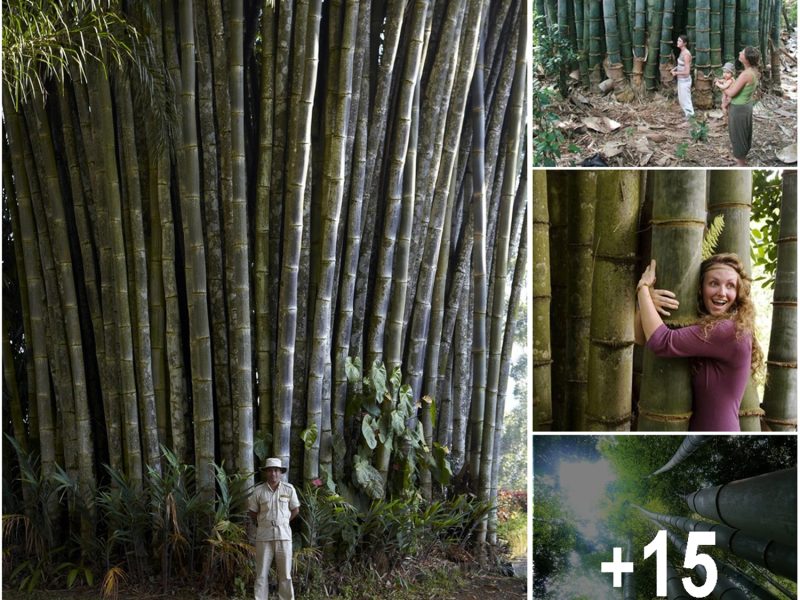The relics, found by a team of Egyptian and German archaeologists, date back more than 3,000 years
Archaeologists in Egypt have hailed a “big discovery” after the statue of one of the country’s most famous ancient rulers was discovered in a Cairo slum.
The statue of Pharaoh Ramses II, whose head was pulled from mud and groundwater by a bulldozer on Thursday, is around 26ft high and was discovered by a German-Egyptian team.
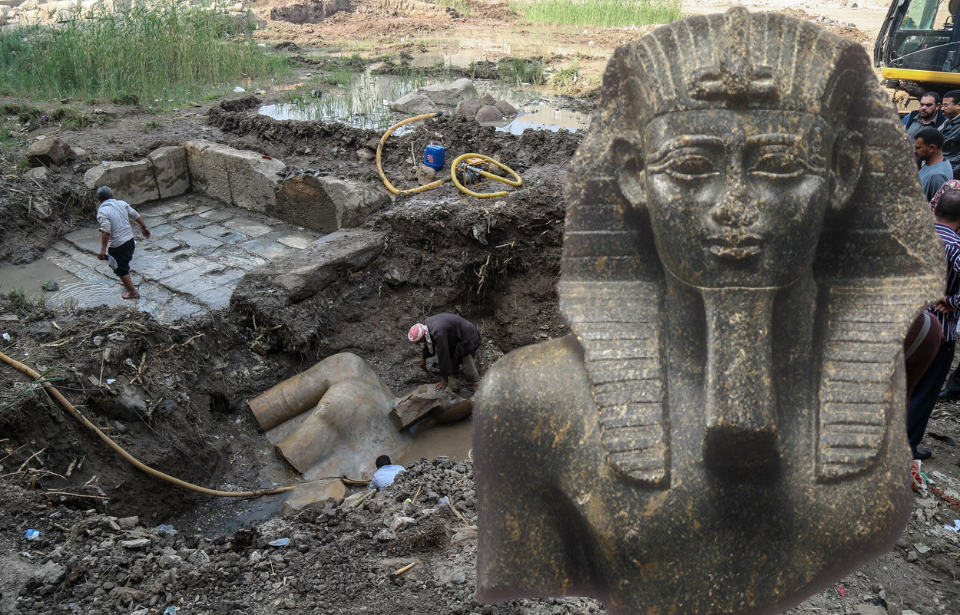
The discovery, hailed by the Antiquities Ministry as one of the most important ever, was made near the ruins of Ramses II’s temple in the ancient city of Heliopolis, located in the eastern part of modern-day Cairo.
“Last Tuesday they called me to announce the big discovery of a colossus of a king, most probably Ramses II, made out of quartzite,” Antiquities Minister Khaled al-Anani said on Thursday at the site of the statue’s unveiling.
The most powerful and celebrated ruler of ancient Egypt, the pharaoh also known as Ramses the Great was the third of the Nineteenth Dynasty of Egypt and ruled from 1279 to 1213 BCE.
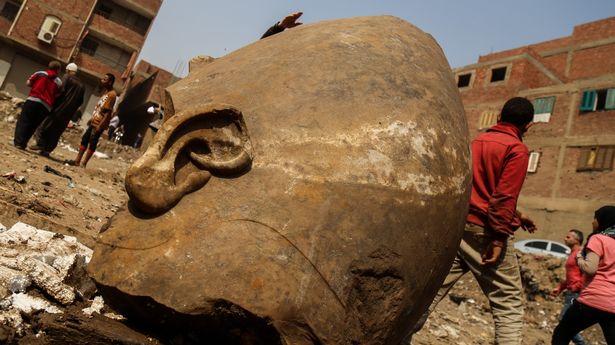
The colossus’ head of what’s believed to be Ramses II was pulled from mud by a bulldozer on Thursday
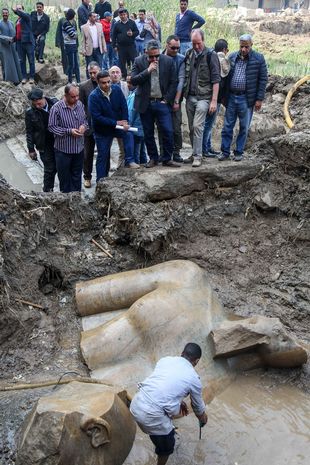
The discovery has been hailed as one of the most important ever
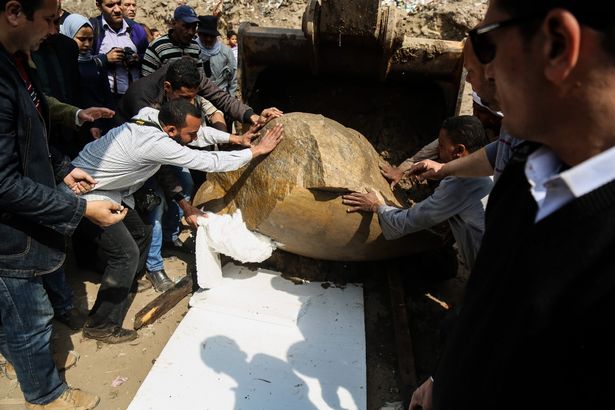
Ramses II was one of the most powerful and celebrated ruler of ancient Egypt
He led several military expeditions and expanded the Egyptian Empire to stretch from Syria in the east to Nubia in the south. His successors called him the “Great Ancestor”.
“We found the bust of the statue and the lower part of the head and now we removed the head and we found the crown and the right ear and a fragment of the right eye,” Anani said.
The discovery was made in the working class area of Matariya, among unfinished buildings and mud roads.
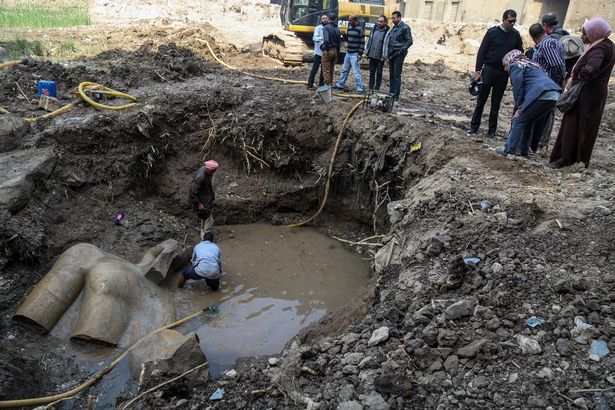
Ancient Egyptians believed Heliopolis was the place where the sun god lives
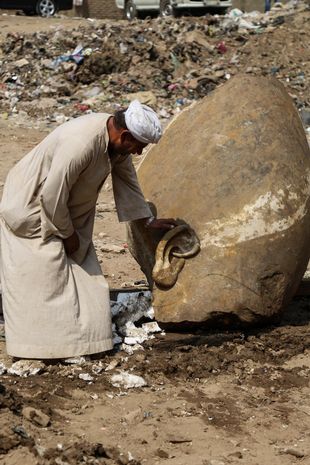
The joint Egyptian-German expedition also found the upper part of a life-sized limestone statue of Pharaoh Seti II, Ramses II’s grandson, that is 80 centimetres long.
Experts will now attempt to extract the remaining pieces of both statues before restoring them.
Dietrich Raue, the head of the German team, said the archaeologists were working hard to lift the statues so they can be transported to another site for restoration.
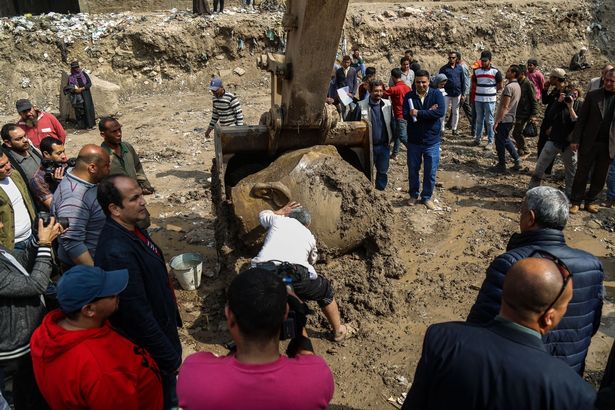
The discovery was made in the working class area of Matariya
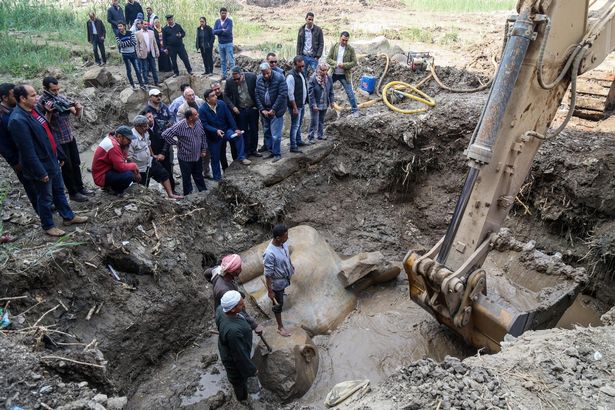
Archaeologists discovered the massive statue in a Cairo slum
He added that Ancient Egyptians believed Heliopolis was the place where the sun god lives, meaning it was off-limits for any royal residences.
“The sun god created the world in Heliopolis, in Matariya. That’s what I always tell the people here when they say is there anything important. According to the pharaonic belief, the world was created in Matariya,” Raue said.
“That means everything had to be built here. Statues, temples, obelisks, everything. But … the king never lived in Matariya, because it was the sun god living here.”
